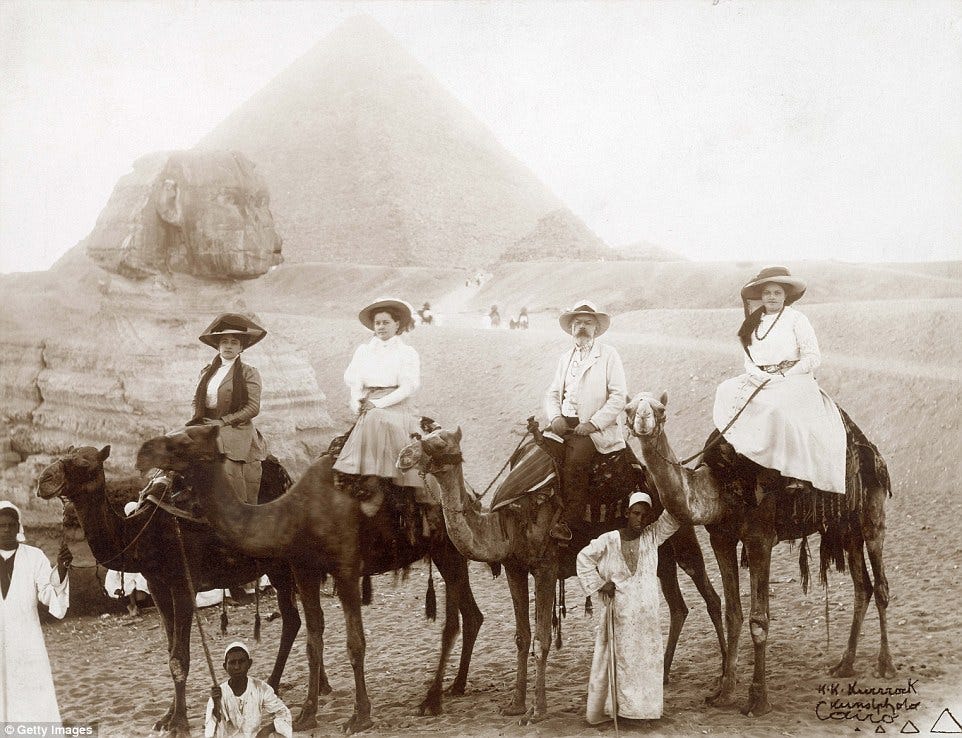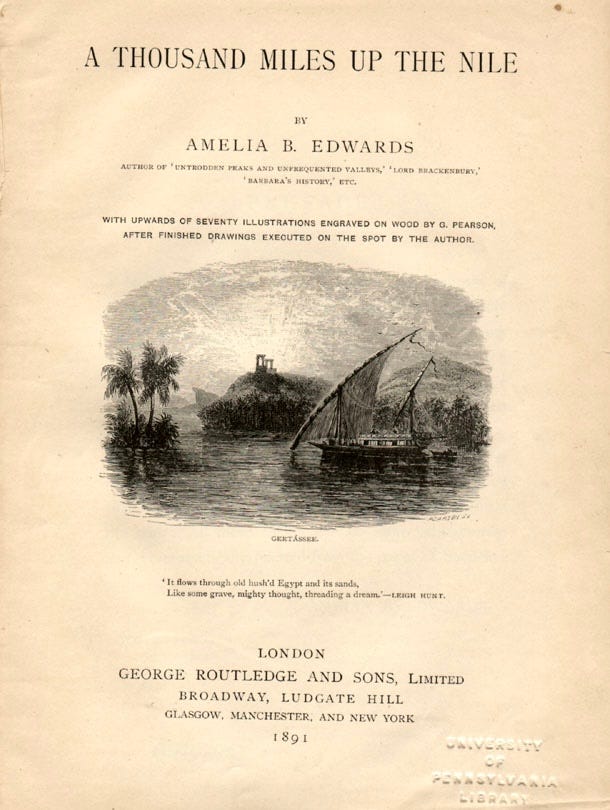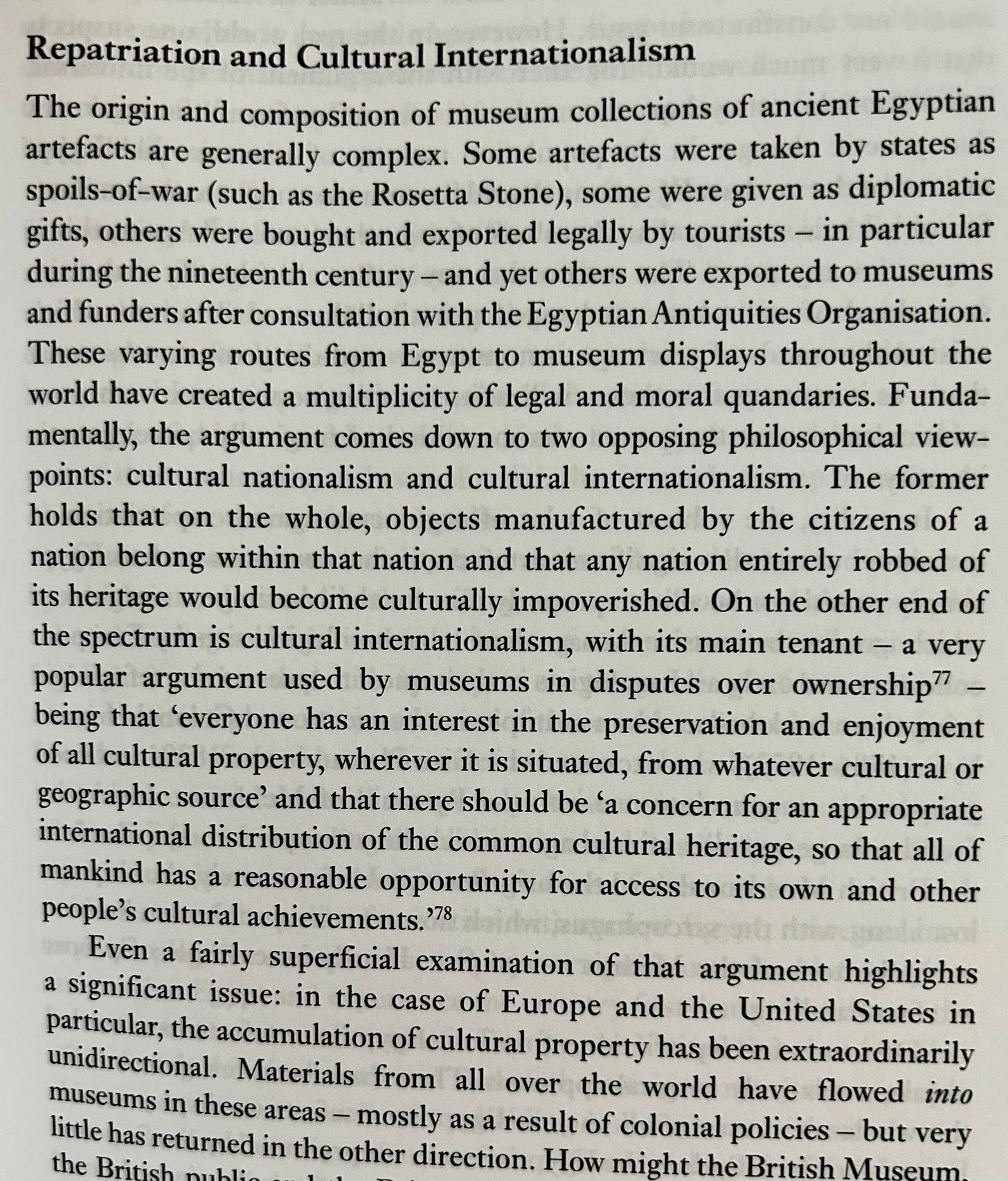Alright, back to Egyptomania! Or more specifically, why Victorians and Edwardians were fully torqued over Ancient Egypt. I better recap the highlights of my last post because even I forgot where I left off:
Henry Salt and Barnardino Drovetti using their positions as British and French Consul General of Egypt, respectively, supply Europe’s largest national museums with Ancient Egyptian artefacts (the British Museum, the Louvre, the Berlin Museum, and the Egyptian Museum of Turin).
The Rosetta Stone was successfully translated, which opened up the world of hieroglyph translation.
In 1881 a ban on non-French Egyptologists and archeologists in Egypt was lifted.
Amelia B. Edwards publishes A Thousand Miles Up the Nile in 1877, which was a recounting of her travels in Egypt. It was immensely popular and impacted tourism in Egypt.
Several quasi-religious, historical societies were founded such as the Egypt Exploration Fund that were focused on ‘conserving’ Egyptian monuments and searching for “documents of a lost period of biblical history”.
Building the collections of smaller regional museums and private collectors
The Egypt Exploration Fund — co-founded by Amelia B. Edwards the travel writer — was primarily concerned with uncovering more about Ancient Egyptian history and society with a particular eye on its biblical associations. To accomplish this more excavations and discoveries necessarily had to occur. The society employed several archeologists over time but their most prolific one was William Matthew Flinders Petrie. The wealth of items Petrie was able to uncover were either gifted to various sponsors of the fund, most being smaller museums, or were auctioned off, in which case private collectors were able to amass their own collections.
Unsurprisingly, wealthy cotton merchants were able to use their business connections in Egypt (Egyptian cotton, duh) to source Ancient Egyptian artefacts for themselves as well. Several examples being Jesse Haworth (1835-1921) and Annie Barlow (check out this BBC documentary about her and 2 other “Victorian Queens of Ancient Egypt”). After the passing of these various cotton merchants, the artefacts were sometimes donated to various museums such as the Manchester Museum, the Chadwick and Bolton Museums, and the Liverpool Museum.
Private collectors who did not donate to museums upon their death often ended up having their items auctioned off by their estate. This cycle of collecting, dying (sorry for the morbidity?), and auctioning off led to a saturation of Egyptian items on the antiquities market and therefore Ancient Egyptian artefacts were circulating all over the world. In 1983 Egypt instituted a law against exporting and selling these antiquities but that hasn’t stopped it entirely. Additionally, the chaos of the Arab Spring in 2011 enabled the looting and exporting of more artefacts under the radar, and it can be difficult to prove that the items were exported post 1983 (items exported prior to that law are not subject to it). For a recent example of this check out this Guardian article about the 2019 sale of a quartzite head of Tutankhamun for 4.7 million pounds that is at the center of a lawsuit.
The legal and ethical dilemmas surrounding the supplying of, as well as the continued ownership of, Ancient Egyptian artefacts anywhere outside of Egypt are not new ones (thanks to colonialism and racism). Egyptologist Nicky Nielsen presents the two prevalent arguments in regards to this in his book Egyptomaniacs:
Now that we are past what I would consider to be some of the more dull parts (hence why this post was delayed) I can talk about some of the more interesting aspects of Egyptomania in the next post. Byyeeeeeee!!!!
The Romance Film We Deserve
90s Throwback
Also not sponsored but I 100% bought these Target mummy pajamas and THEY GLOW IN THE DARK! But besides these pajamas I am disappointed with the Halloween selection this year at Target. Not cool.








